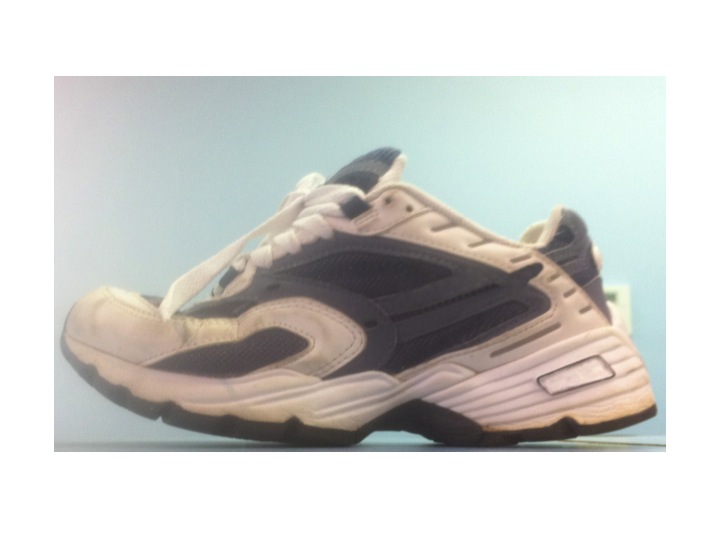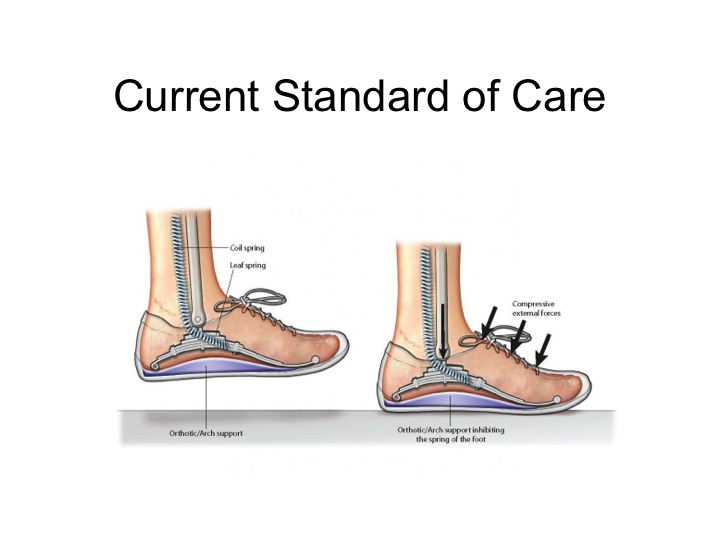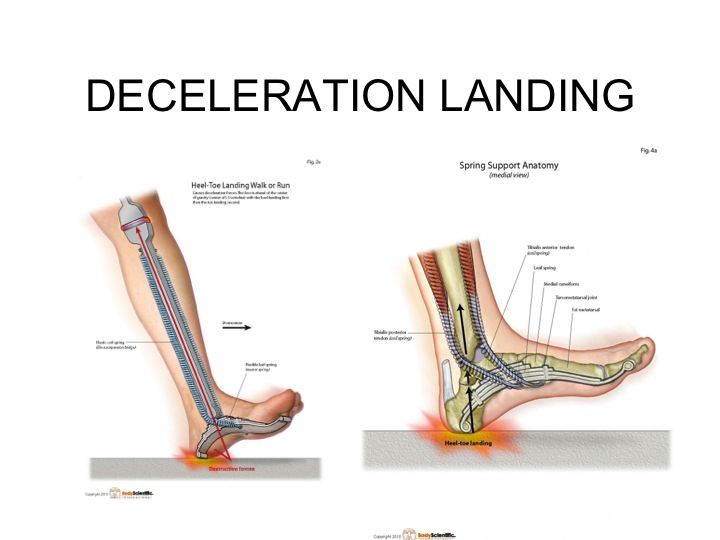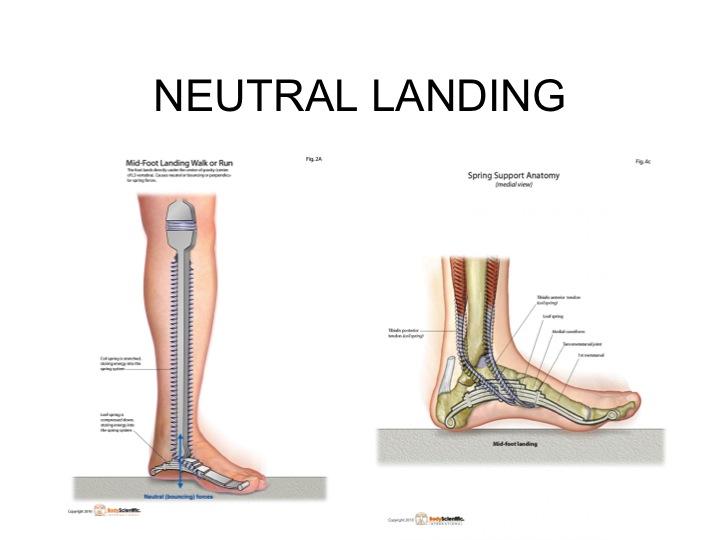Lecture Video and Notes for Walk and Run For Life! Through Lever Mechanisms or Spring Mechanisms? (English) Presented at The 2012 Shanghai World Congress on Anti-Aging Medicine
This lecture was presented by Dr. James Stoxen DC at the The World Congress on Anti-Aging Medicine and Regenerative Biomedical Technologies Expo, Shanghai, China October 18, 2012
CLICK HERE TO SEE THE LECTURE ON THE ORIGINAL SITE.
Summary of the human spring model and approach….
The lessons taught in medical schools, medical books and scientific papers about how the body works and how it breaks down, though based on modern medical constructs, just didn’t add up.
Doctors and scientists use the HUMAN LEVER MODEL as the model for the basis of how they examine, treat and maintain the human body.
I felt that the lever model and approach taught in the medical and fitness industries was incomplete. I felt it was obvious that the world was missing something big. There were just too many unexplained mysteries that perplexed doctors and scientists and left patients feeling hopeless, frustrated and in a chronic state of pain and suffering.
For example…
Why is there resistance exercise which work levers and plyometrics which work spring mechanisms but doctors only examine and treat the body like a lever mechanism? Shouldn’t the body be examined and treated as a spring mechanism?
Why are impacts considered damaging to the human body however athletes use drills of high impact jumps as the primary way to improve quickness, speed and injury resistance?
Over 30 years ago I set out to find the answers to the many questions that frustrate doctors and their patients who suffer. I felt these answers would provide us with the secrets to the best approach to allow us to reach the true potential of our human body. I took off my white coat and considered the human form from different logical points of view: a mechanical engineer, an anatomist and a physicist. I then combined this new perspective with my years of experience interviewing, treating and training hundreds elite athletes in many sports from around the world. What I found was fascinating to me, doctors around the world and I’m excited to share it with you!
This is what I determined..
The human body moves as a lever mechanism AND a spring mechanism.
The Human Spring Model and Approach
Every movement you make is powered by a miraculous spring mechanism. Once you learn how it works, the important functions it serves, how it breaks down and locks, and how it effects so many aspects of your health, you will see why so many suffer and are misdiagnosed.
Then when I teach you my new approach to releasing, strengthening and supercharging your human spring, you will understand why my patients recover when other approaches have failed. Understanding the human spring will help you understand how certain athletes can high jump seven feet over a bar or run fifty miles without stopping, while other people can’t jog, walk, lift weights of even get up out of a chair without pain. The efficiency of your body’s motion has everything to do with the integrity of your human spring.
If this theory is true, it means that medicine must change all the examination and treatment protocols to include an effective treatment approach for the human spring element in human movement. I have outlined the human spring theory and approach in this lecture.
A Painful Misunderstanding of Human Engineering
Unfortunately, the world doesn’t regard the body as a living spring. Consequently, they are missing out on the most important aspects of how the human body moves, protects itself, recycles energy and functions in a world governed by the laws of nature, physics, engineering and common sense. Today’s current medical practices and exercise approaches defy the laws of nature, physics and engineering.
The Human Spring Model says the body has a spring mechanism (not a lever mechanism) that functions to protect the body from impacts as well as recycles energy for optimum efficiency.
If it locks then the force of impact is taken up by the tissues and as a result we have chronic inflammation and severe injuries. In the knee it could be mistaken knee pain, torn cartilage or degeneration of the cartilage possibly leading to artificial knee replacement. In the shin bone or tibia bone we call it shin splints.
In the foot it could be plantar fasciitis, heel spurs, metatarsal stress fractures or just foot pain.
From my clinical experience, the majority of the people who have injuries from running such as plantar fasciitis, shin splints, heel pain, runners knee, hip pain, illiotibial band syndrome and herniated discs. The theory says that the pain comes after impacts of walking, running or participation in sports happen because the spring mechanism can’t effectively absorb the impact into the spring.
Why the Human Spring Model and Approach is best for an Anti-aging Doctor
by Dr. James Stoxen DC
_____________________________________________________________________
Bedridden to Barefoot
Reclaim Your Youth
- Barefoot – No Supports
- Footwear – 4 Supports
- Motion Control – 4 Supports
- Orthotics – 6 Supports
- Orthopedic Shoes and Orthotics – Foot Lock
- Cane – 7 Supports
- 4-Prong Walker – 10 Supports
- Wheel Chair – 4 Wheels – reverse adaptation
- Bedridden – Bed – reverse adaptation
_____________________________________________________________________
Injuries Can Happen When Running
_____________________________________________________________________
Zola Budd Barefoot Runner
_____________________________________________________________________
Kinesthetic learning via Kinesthetic Senses
- Strength, efficiency and safety of all movement is determined by neuromuscular factors, in particular the sense of kinesthesis and the underlying proprioceptive mechanisms which inform us about where all the components of our musculoskeletal system are and what they are doing relative to one another in space and time.
- The integration of information enables us to execute a given movement in the most appropriate way in terms of pattern, velocity, acceleration and timing.
- One way of improving proprioceptive efficiency is to diminish or block input from other sensory systems.
- Collagenous tissue increases significantly in strength and stiffness with increased rate of loading.
- There by emphasizing the intelligent use of training with high acceleration methods.
- One study found an increase of almost 50% in load of knee ligaments to failure when the voting rate was increased for four fold (Kennedy et al 1976)
_______________________________________________________________________
Biomechanical And Physiological Comparison Of Barefoot And Two Shod Conditions In Experienced Barefoot Runners.
- 8 subjects analyzed using instrumented treadmill analysis
- Compared to the standard shod condition when running barefoot the athletes landed in more plantar flexion at the ankle.
- Barefoot running caused reduced impact forces and changes in stride kinematics.
________________________________________________________________________
Can Barefoot Activity Alleviate Knee Pain and Arthritis
- They looked at the external knee adduction moment (EKAM) when we are wearing shoes and when we are barefoot. EKAM represents knee load distribution from the inside to the outside of the knee joint.
- The higher the EKAM is, the greater and faster the progressions of deterioration (osteoarthritis) of the knee joint.
- These researchers found that sneakers and running shoes increased EKAM when compared to barefoot walking and barefoot running.
________________________________________________________________________
Foot Strike Patterns And Collision Forces In Habitually Barefoot Versus Shod Runners
- habitually barefoot endurance runners often land on the fore-foot
- habitually shod runners mostly rear-foot strike, facilitated by the elevated and cushioned heel of the modern running shoe.
- Kinematic and kinetic analyses show that even on hard surfaces, barefoot runners who fore-foot strike generate smaller collision forces than shod rear-foot strikers.
- This difference results primarily from a more plantar flexed foot at landing and more ankle compliance during impact, decreasing the effective mass of the body that collides with the ground.
__________________________________________________________________________
- Runners were 2.41% more economical in the minimal-shoe condition when forefoot striking.
- 3.32% more economical in the minimal-shoe condition when rear foot striking.
- Arch strain was not measured in the shod condition but was significantly greater during forefoot than rearfoot striking when barefoot.
- Plantar flexor force output was significantly higher in forefoot than in rear foot striking and in barefoot than in shod running.
- Achilles tendon-triceps surae strain and knee flexion were also lower in barefoot than in a standard-shoe running shoe.
- Minimally shod runners are modestly but significantly more economical than traditionally shod runners regardless of strike type, after controlling for shoe mass and stride frequency. The likely cause of this difference is more elastic energy storage and release in the lower extremity during minimal-shoe running.
__________________________________________________________________________
The Effect of Running Shoes on Lower Extremity Joint Torques
- 68 subjects ran barefoot and in the same type of stability running footwear.
- Three-dimensional motion capture data were collected in synchrony with ground reaction force data from an instrumented treadmill for each of the 2 conditions.
- Increased joint torques at the hip, knee, and ankle were observed with running shoes compared with running barefoot.
- 54% increase in the hip internal rotation torque.
- 36% increase in knee flexion torque.
- 38% increase in knee varus torque were measured when running with shoes compared to barefoot.
________________________________________________________________________________
The Normal Orientation Of The Human Hallux And The Effect Of Footwear
- The orientation of each hallux was determined in thirty-eight radiographs by measuring the angle.
- The wearing of anatomically designed shoes would often allow the hallux to straighten, provided the abductor hallucis muscle functioned adequately.
________________________________________________________________________________
Shod Versus Unshod: The Emergence Of Forefoot Pathology In Modern Humans?
- They investigated the frequency of metatarsal bone pathologies in contemporary and habitually unshod vs shod
- The metatarsal elements from four human groups were examined for pathological variation. Three were from recent rural and urban shod populations (Sotho, Zulu and European) and one from habitually unshod pre-pastoral Holocene people.
- The pathological lesions found in the metatarsals of the three shod human groups generally appeared to be more severe than those found in the unshod group.
- This result may support the hypothesis that pathological variation in the metatarsus was affected by wearing of footwear and exposure to modern substrates.
_______________________________________________________________________________
Shock Attenuation in Barefoot Running
- 8 subjects were instrumented with piezoelectric uniaxial accelerometers to measure shock attenuation which were attached to the distal aspect of the right tibia on the medial side and to the front of the head.
- Differences in the kinetics and kinematics of running was observed when comparing barefoot and shod running
- Although the impact at the leg is greater at contact BF, the body is capable of attenuating the impact before it reaches the head.
- Future research is required
______________________________________________________________________________
Mechanical Comparison of Barefoot and Shod Running
- 35 subjects ran two bouts of 4 minutes at 3.33 m x s(-1) on a treadmill dynamometer
- Barefoot showed mainly lower contact and flight time, lower passive peak, higher braking and pushing impulses, higher pre-activation of triceps surae muscles than shod.
- It was concluded that when performed on a sufficient number of steps, barefoot running leads to a reduction of impact peak in order to reduce the high mechanical stress occurring during repetitive steps.
_____________________________________________________________________________
- 7 subjects
- The average velocity of the increase in internal rotation after contact was related to corresponding ‘heel balance’ velocities.
- The high-speed pressure mat measures of barefoot and shod running (shoe-ground interface) were shown to be predictive of tibial internal rotation velocity.
_______________________________________________________________________________
Walking Barefoot Decreases Loading on the Lower Extremity Joints in Knee Osteoarthritis
- Gait analyses were performed on 75 subjects with knee OA while they were wearing their everyday walking shoes and while they were walking
- Optoelectronic detection of external markers during ambulation over a multicomponent force plate, and were matched for speed.
- Peak joint loads at the hips and knees significantly decreased during barefoot walking, with an 11.9% reduction noted in the knee adduction moment.
- Shoes may detrimentally increase loads on the lower extremity joints.
_______________________________________________________________________________
- Surface electromyography of the abductor hallucis muscle was recorded.
- The intrinsic foot muscles play a role in support of the medial longitudinal arch in static stance. Disrupting the function of these muscles through fatigue resulted in an increase in pronation as assessed by navicular drop.
_______________________________________________________________________________
A high concentration of flat foot among six-year-old children who wore shoes as compared with those who did not, implies that the critical age for development of the arch is before six years.
Furthermore, optimum foot development occurs in the barefoot environment, and, therefore, children should be encouraged to partake in barefoot activity.
Paul J. Lucas* , Michael M. Berrow, Richard K. Frazine, and Robert A. Neinast
_______________________________________________________________________________
Barefoot To Bedridden
Barefoot – No Supports
Footwear – 4 Supports
Motion Control – 4 Supports
Orthotics – 6 Supports
Orthopedic Shoes and Orthotics – 6 Supports
Cane – 7 Supports
4-Prong Walker – 10 Supports
Wheel Chair – 4 Wheels
Bedridden
_______________________________________________________________________________
What is Human Spring
_______________________________________________________________________________
Bob Beamon
World Record Long Jump
_______________________________________________________________________________
Human Spring Model
- The human spring stores mechanical potential energy therefore it is an efficiency mechanism.
- The human spring absorbs forces of landings therefore it is a protective mechanism.
- The human spring allows the foot to land on uneven surfaces adjusting the body mechanics to the terrain.
- The human spring is integrated into the biomechanics therefore it is essential for stress/strain free motion
Weakness or locking of the spring can lead to fatigue, increased risk for acute injury, inability to heal and accelerated aging of the body’s systems.
______________________________________________________________________________
Elastic or Spring Energy
- In the elastic-like bounce of the body at each running step the muscle-tendon units are stretched after landing and recoil before take-off.
- Evidence has been provided suggesting that muscle is kept quasi-isometric with the consequence that the length change of the muscle–tendon unit is mostly sustained by tendons.
- It has been found that much of the muscle activity in running is associated with tensioning of the tendons, which thereby store energy for successful cycles of movement.
- Isometric conntractions are considerably less expensive than dynamic contractions.
_____________________________________________________________________________________
Eccentric vs Concentric Training
- An eccentric contraction refers to muscle action winch the muscle force succumbs to the imposed load and the muscle complex lengthens. Not only is it metabolically much more efficient than concentric contraction, but it’s also capable of generating higher forces (Kaneko 1984) (Komi 1973) (Rodgers And Berger 1974)
- In addition this difference between concentric and eccentric contractions has been found to depend on the velocity of contraction (Komi 1973)
- As the velocity of contraction increases, so do those maximums eccentric force increase whereas the maximum concentric force decreases even though the corresponding EMG for the given muscle group remains reasonably constant.
______________________________________________________________________________
What Surfaces are Best For Barefoot Running?
- On the stiffest surfaces, the legs compressed in early stance and then extended in late stance in the pattern that is typical for normal bouncing gaits.
- On the softest surfaces, however, subjects reversed this pattern so that the legs extended up to 8 cm in early stance and then compressed by a similar distance in late stance.
- Consequently, the center of mass moved downward during stance by 5-7 cm less than the surface compressed and by a similar distance as on the stiffest surfaces.
- This unique leg action probably reduced extensor muscle pre-stretch because the joints first extended and then flexed during stance. This interpretation is supported by the observation that hoppers increased muscle activation by 50% on the softest surface despite similar joint moments and mechanical leg work as on the stiffest surface.
- Thus, the extreme adjustment to leg mechanics for very soft surfaces helps maintain normal center of mass dynamics but requires high muscle activation levels due to the loss of the normal extensor muscle stretch-shorten cycle.
________________________________________________________________________________
Human Spring
________________________________________________________________________________
Spring Mechanics – Hookes Law
________________________________________________________________________
Running Injuries
Most important is the ability of the spring suspension system to handle the force of the landings.
________________________________________________________________________________
What To Consider When Evaluating Injuries
The development of strength–endurance is a an inherent characteristic and the fundamental principle of training for developing general endurance. Training for strength–endurance is determined predominantly by:
- The magnitude of the load
- The rest interval between training sessions
- The length of the training period
- Additional levels of strength–endurance of the athlete
- The kinesiological structure of the movement
- Relative involvement of static and dynamic strength–endurance
______________________________________________________________________________
- This type of deformation is reversible. Once the forces are no longer applied, the object returns to its original shape.
- The ability of the spring to deform, store energy, reform to its exact original shape, releasing energy.
- THE ABILITY OF THE SPRING TO DEFORM, STORE ENERGY, REFORM TO ITS EXACT ORIGINAL SHAPE, RELEASING ENERGY
- This is the key principle behind aging
_______________________________________________________________________________
Plastic Deformity
In physics and materials science, plasticity describes the deformation of a material undergoing non-reversable changes of the shape in response to applied forces.
The human spring deforms, stores energy, does not return to its exact original shape, releases less energy.
ENERGY, DOES NOT RETURN TO ITS EXACT ORIGINAL SHAPE, RELEASES LESS ENERGY
J. Lubliner, 2008, Plasticity theory, Dover, ISBN 0-486-46290-0, ISBN 978-0-486-46290-5.
________________________________________________________________________________
Elastic Deformity vs Plastic Deformity
________________________________________________________________________________
- Beyond the elastic limit, permanent deformation will occur.
- The lowest stress at which permanent deformation can be measured.
________________________________________________________________________________
Preventive or Anti-aging Medicine Is not working in Orthopedic Medicine with the current Model and Approach
_______________________________________________________________________________
Train the Landings Vs Take Offs
Spring Suspension System
- (Frided 1983) found that eccentric training to failure produces market increases in eccentric strength–endurance, but minimal changes in concentric strength–endurance.
- Since lengthening of muscle complex occurs with the centric contraction the stretching SEC series elastic component is exposed to greater strain than under concentric conditions and the potential for increase of injury. Thus it is not surprising to learn that most muscle strains and ruptures occur during the Eccentric phase of movement (Garrett 1986)
Garrett W (1986) Basic science of musculotendonous injuries In Nicholas J & Hershman E (eds) The Lower Extremity and Spine in Sports & Exercise CV Mosby Co, St Louis : 42-58
_______________________________________________________________________
Gait Analysis
_______________________________________________________________________________
Compensating Motion
_______________________________________________________________________________
Understanding the Dynamics of Human Spring
_____________________________________________________________________________________
Cascade following Breakdown of the Impact Protection and Energy Recycling Mechanisms
- Pain and accelerated ageing
- Silent inflammation
- Wear and tear
- Stress and strain
- Compensating abnormal movement
- Drop and lock of the spring mechanism
- Weakness in spring suspension system
________________________________________________________________________________
- Aging reveals changes in collagenous tissues similar to those caused by immobilization with reduction in strength and stiffness of ligaments occurring with advanced age.
- These changes may need you not only to the degenerative process, but also to reduce physical activity, superimpose disease states and other undefined processes (Frankel V & Nordin M 1980)
- Adaptation occurs more slowly and connective tissue such as tendons and ligaments that in muscle and any increase tension may possible in the muscle tenderness complexes by the increased muscle mass can cause damage to these structures (Zalessky & Burkhanov 1981) the US.
- Thus extensive hypertrophy usually leads to slower muscle recovery after exercise, deterioration and speed, speed–strength and speed as well as an increased incidence of injury.
Zalesky M & Burkhanov A (19810 Muscle Condition and work capacity in track and field athletes Legkaya Athletika 1: 1-7
______________________________________________________________________________
Landing Muscles
Spring Suspension System Muscles
- Temporary tendon energy storage led to a significant reduction in muscle fascicle lengthening velocity and the rate of energy absorption. We conclude that tendons function as power attenuators that probably protect muscles against damage from rapid and forceful lengthening during energy dissipation.
- For tendon springs to operate effectively, their mechanical properties must be matched to their function.
- For elastic mechanisms is tendon stiffness, and there is increasing evidence that the stiffness of a tendon is ‘tuned’ by remodeling to allow for the effective operation of the muscle–tendon-load system. Several studies have now documented significant increases in tendon stiffness in response to long-term exercise.
J Appl Physiol. 2001 Jan;90(1):164-71.
Effects of long-term exercise on the biomechanical properties of the Achilles tendon of guinea fowl
__________________________________________________________________________________
Connective Tissue Strength vs Muscle Strength
- More over, muscle tissue adapts to increase loading within several days.
- Connective tissue such as tendons ligaments and joints and bones or systems which contain a high proportion of connective tissue such as bone and cartilage only display significant adaptation and hypertrophy after several weeks or months of progressive loading.
- It is vital that the prescription of training takes into account the different rates of adaptation of all systems involved and avoids overtraining systems with the lowest rates of adaptation.
- Gradual increase in training load and avoidance of impulse or explosive methods is essential for minimizing the occurrence of connective tissue soreness and injury
______________________________________________________________________________
Free Stored Elastic Energy
______________________________________________________________________
______________________________________________________________________
Causes of Weakness in the Human Spring Suspension System
______________________________________________________________________________
Nature January 2010 Lieberman et al., Nature, 463: 531-565
- Scientists have found that people who run barefoot, or in minimal footwear, tend to avoid Heel-striking, and instead land on the ball of the foot or the middle of the foot. In so doing, these runners use the architecture of the foot and leg and some clever Newtonian physics to avoid hurtful and potentially damaging impacts, equivalent to two to three times body weight, that shod heel-strikers repeatedly experience.
- People who don’t wear shoes when they run have an astonishingly different strike.
- By landing on the middle or front of the foot, barefoot runners have almost no impact collision, much less than most shod runners generate when they heel-strike.
- Most people today think barefoot running is dangerous and hurts, but actually you can run barefoot on the world’s hardest surfaces without the slightest discomfort and pain. All you need is a few calluses to avoid roughing up the skin of the foot. Further, it might be less injurious than the way some people run in shoes.
Daniel E Lieberman, a professor in Harvard’s new department of human evolutionary biology
_____________________________________________________________________________
_____________________________________________________________________________________
Static Evaluation
__________________________________________________________________________________________
Dynamic Lever Evaluation
_____________________________________________________________________________________
Dynamic Spring Evaluation
_____________________________________________________________________________
_____________________________________________________________________________
Gait Analysis
_____________________________________________________________________________
Can Inserts Interfere with Spring Loading _____________________________________________________________________________
Steps to Increasing Impact Protection and Energy Recycling
- Release The Abnormal Internal Compressive Force On The Human Spring
- Increase Depth Of Loading Of Forces Into The Human Spring
- Strengthen The Spring Suspension System via Lever Strengthening
- Strengthen The Spring Suspension System via Spring Strengthening
- Maintain
_____________________________________________________________________________
STEP ONE
Release The Abnormal Internal Compressive Force On The Human Spring
______________________________________________________________________________
Treatment of Muscle Spasms that Preload the Spring Protection and Energy Recycling Mechanisms
- Muscle spindles which detect changes in muscle fiber length and rate of change of length.
- Golgi tendon organs which monitor the tension and muscle tendon during muscle contraction or stretching.
_______________________________________________________________________________
Employ Hookes Law – Increase Depth Of Loading Of Forces Into The Human Spring
- Dynamic Plyometric-Impact Stretching
- Plyometric impulsive stretching, which involves rapid termination of eccentric loading followed by a brief isometric phase and an explosive rebound belying and stored elastic energy and powerful reflex muscle contraction.
- This stretch shortening action is not intended to increase range of motion, but to use specific stretching phenomena and to increase speed strength of movement for a specific sporting purpose.
________________________________________________________________________________
Current Standard of Care
Lever Model has no physics for understanding Impact Protection or How To Increase Impact Resistance or Improve Energy Recycling.
__________________________________________________________________________________
Relax Preload Muscle Tension to Maximize Depth of Safe Loading Elastic Spring Elements to do the Work
- The ability to relax muscle is very important for rapid movements especially in cyclical actions, which involve recent assists of ATP during the phases between muscle contractions.
- The adequate retrieval of elastic energy stored in the muscle complex, together with the stretch–shortening potential of force output, or valuable prerequisites for efficient high velocity cyclic and acyclic movement.
- Verhkoshanski 1996 reports that economical sprinting activity can result in the recovery of about 60% of total mechanical energy expended in the movement cycle, with the remaining 40% being
- He had set a high correlation between the muscular capacity to store potential elastic energy and the performance of distance runners, with an increase in the contribution from non-metabolic energy sources taking place with increased in running velocity.
Strengthening the Human Spring Lever Mechanisms
Resistance Lever Exercises
________________________________________________________________________________
STEP THREE
Barefoot Running
Jumping Drills
Plometrics
________________________________________________________________________
Running-Related Injury Prevention through Barefoot Adaptations
- It is hypothesized that the adaptations which produce shock absorption, an inherent consequence of barefoot activity and a mechanism responsible for the low injury frequency in unshod populations, are related to deflection of the medial longitudinal arch of the foot on loading.
- It is also hypothesized that the known inability of this arch of the shod foot to deflect without failure (foot rigidity) is responsible for the high injury frequency in shod populations.
- To evaluate these hypotheses, 17 recreational runners were analyzed to study the adaptive pattern of the medial longitudinal arch of the foot due to increased barefoot weight-bearing activity.
- Changes occurred in the medial longitudinal arch which allowed deflection of this arch on loading which substantiated the hypotheses.
- Other evidence suggests that sensory feedback largely from the glabrous epithelium of the foot is the element of barefoot activity which induced these adaptations.
- The sensory insulation inherent in the modern running shoe appears responsible for the high injury frequency associated with running. The injuries are considered “pseudo-neuropathic” in nature.
_____________________________________________________________________________
There is a gap in the way doctors think and do and what athletes and patients require for top performance
_____________________________________________________________________________
Retraining Abnormal Movement Patterns Running-Walking Form & Technique
_____________________________________________________________________________
Bang And Twist Walking vs Spring And Roll Walking
_____________________________________________________________________________
Deceleration Landing
_____________________________________________________________________________
Neutral Landing
_____________________________________________________________________________
Acceleration Landing
_____________________________________________________________________________
Old men running: mechanical work and elastic bounce
The results support the working hypothesis that the impaired muscle function in the old subjects results in a smaller amplitude of the vertical oscillation of the centre of mass, with a lower upward acceleration and a reduced duration of the aerial phase.
These in turn imply:
- (i) less elastic energy stored
- (ii) a higher step frequency
- (iii) a lower external work to maintain the motion of the centre of mass of the body relative to the surroundings, and
- (iv) a greater internal work to accelerate the limbs relative to the centre of mass.
Second Toe Towards The Target
__________________________________________________________________________________
Human Lever Model and Approach Vs
Human Lever and Human Spring Model and Approach
Is it Time for a Paradigm Shift to this New Model and Approach
__________________________________________________________________________________
Human Lever and Human Spring Model and Approach
Progressive regenerative medicine and anti-aging medicine is defined as the earliest detection, intervention and prevention of age-related diseases. The current standard of care only requires doctors to do evaluations of the musculoskeletal systems when patients present with signs and symptoms of anti-aging related diseases.
Anti-aging medicine and the Human Spring Model and Approach exceeds this standard by practicing a form of medicine aimed at improving patients’ performance to the Olympic level for their age group before the pain even starts.
__________________________________________________________________________________
Thank you!
Like this article? We will send the next one to you.
Register for our updates below:
Please share your comments below and include your web site everyone can check you out!
Please feel free to share this information with your friends
Keep in touch with Dr. Stoxen and Team Doctors by connecting to us below:
Connect with Dr. Stoxen: Connect with Team Doctors:
Dr. James Stoxen DC Facebook Team Doctors Facebook
Dr. James Stoxen DC Twitter Team Doctors Twitter
Dr. James Stoxen DC Google + Team Doctors YouTube
Dr. James Stoxen DC Pintererest Team Doctors Vimeo
Dr. James Stoxen DC LinkedIn Team Doctors Daily motion



























